Nose Job in Iran
Operation: 1 – 2 Hours
Anesthesia:General
Healing:1 – 6 months
Clinic Stay: 1 Day
Total Stay: 7 Day
Back to Work: 12 Days
OUR NOSE JOB SURGERY DOCTORS
Click on Doctors name to see details, reviews, before & after photos and all information you may need about them.
What We Offer
What We Offer
Nose job surgery, an easy procedure in Iran!
Zabi Azizi is a 29-year-old Finnish boy. Zabi had drooping eyebrows, which made his look older than his age. Zabi met Iran surgery center while searching the internet to find a professional surgery center at a reasonable price, and everything started from the same internet acquaintance. When he came to Iran, in addition to eyebrow lift surgery, he decided to do a nose job as well. In the best and happiest state, Zabi performed his eyebrow lift surgery using the Endotain method and his nose job, and left Iran for Finland with full satisfaction. but how he did it?
Your Detailed Schedule in Iran
>> Day 1: The representative of Iran Surgery Center is waiting for you at the airport. And transfers you to the hotel. You will meet the doctor on the same day and then perform your tests with our representative.
>> Day 2: Our representative at the hotel is waiting for you to go to the surgery center or hospital together. All arrangements are made by us for surgery. Instructions after surgery will be communicated to you in writing and orally.
>> Day 3: You will return to the hotel with your translator. The doctor’s assistant and translator will start 24 hours a day. A private nurse will be available if needed. Daily light walking and taking postoperative medications begin.
Our Patients Have Something To Tell You
See why people choose us as their facilitator to get their plastic surgery done in Iran.

Is Iran the right choice for my Nose Job surgery?
Rhinoplasty is the most common plastic surgery in Iran and 25,000 rhinoplasties are performed annually in Iran, which has made Iran the fifth most common Nose Job in the world. The high experience of doctors in performing rhinoplasty, advanced hospitals and also the very reasonable price of rhinoplasty, has made Iran the destination of Nose Job in many countries of the world. At Iran Surgery Center, we provide all the facilities for travel and excellent surgery in Iran.
Why choose Iran Surgery Center?
At Iran Surgery Center, in cooperation with top Iranian doctors, we provide world-class medical and beauty services. Providing visas, tickets, transportation within the city, reception and escort to the airport, accompanying you in all stages of treatment, surgery, performing tests and imaging before and after surgery are among the services of Iran Surgical Center.


How will my surgery go at Iran Surgery Center?
The surgical procedure in Iran Surgical Center is very simple. In the first step, you contact us through one of the online communication methods (WhatsApp, Instagram, email, Facebook, etc.). We will do the rest for you. Our experts will review your basic information and requirements. They may ask you for a photo of the area you want to do to choose the right surgeon or to announce the price more accurately, or they may ask for your medical records for medical surgeries. In the following, we take all the necessary measures for a quiet and comfortable surgery.
Why choose Iran for cosmetic surgery?
cosmetic surgery is very popular in Iran and Iranian girls are very interested in various types of cosmetic surgery and cosmetic services . Iran is known as the ‘nose job capital of the world’ because of the high rate of the procedure. With highly-trained facial and body surgeons and very affordable costs, Iran is a hot destination for all cosmetic surgery candidates from all around the world.

FREQUENTLY ASKED QUESTIONS ABOUT NOSE JOB IN IRAN
As the surgery is performed under general anesthesia, you won’t feel any pain during the operation. The degree of pain after regaining consciousness is different from person to person, depending on the patient’s pain threshold and the technique used (open and closed). To control the pain, the doctor may prescribe some painkillers and painkillers. Rest is the most effective way to help you recover.
Most patients report relatively mild pain. Most patients report relatively mild discomfort after surgery (between 36 and 72 hours). In fact, rhinoplasty is not very painful.
No one can claim that surgery is completely risk-free. However, the chance of developing complications after rhinoplasty can be greatly reduced by choosing the right surgeon.
Our board-certified rhinoplasty surgeons have at least 12 years of experience, having done over 5000 operations each during this period. This translates to their vast expertise in every aspect of nose surgery, giving you assurances that you will have a nose job as safe as possible with the most satisfactory result.
In closed rhinoplasty, as a small incision in made inside the hols, there will be no visible scarring. In open rhinoplasty, the scarring left depends on the skill of the surgeon in making the incisions and sewing them up, and the skin thickness and texture (thin and light skin is less prone to scarring).
Using anti-scar ointments and gels in the first 3 months after surgery can help reduce the scarring.
Usually with the passage of time, the suture scar will be completely removed.
Although it is thought that sex has nothing to do with the nose, it is necessary to know that this relationship changes the levels of some hormones such as adrenaline in the body and also affects blood pressure and causes swelling and bleeding. High blood pressure during the recovery period is considered a serious risk for a newly operated nose because it causes damage to the vessels in this area and the possibility of bleeding will disrupt the result of the nose surgery.
Also, during sex after nose surgery, an unwanted blow to the nose may occur. The nose needs serious care during the recovery period. Any possible impact, however slight, can damage the beautiful result of your surgery.
The recommended period of time to avoid sex after rhinoplasty is approximately two weeks.
The nose needs a period of six months to fully heal. During this period, keep your sexual relations to a mild level so that your body has the time it needs to achieve the final recovery.
Cortone injection after nose surgery helps to reduce nasal swelling and is mostly done in patients with fleshy noses. Because fleshy noses have thicker skin and the swelling is higher. The right time to inject coronet depends on the discretion of the doctor, and if it is done prematurely, it can cause depression in the nose.
Diabetic people can perform rhinoplasty if they have controlled blood sugar by following the necessary criteria and a letter approved by the endocrinologist.
According to research, a diabetic person should have an HbA1c of less than 7% before considering a rhinoplasty. Accurate control of diabetes is very important in helping the wound heal. You should give HbA1c test to the patient before rhinoplasty.
High blood glucose levels can lead to many problems and prevent blood from reaching the surgical areas, which slows down the healing process of the incision site and puts the person at risk of infection. .
In consultation with the doctor 24 hours before the nose surgery, in order to prevent unexpected lack of insulin on the day of surgery, minimize the amount of bolus insulin.
During rhinoplasty, your blood sugar is unpredictable, and depending on the duration of the surgery, the surgeon will recommend different techniques to manage meals and medication dosages. Usually, in the recommendations provided, the dose of basal insulin remains constant, but the use of bolus insulin is postponed.
If you monitor your blood glucose regularly, be sure to inform the rhinoplasty doctor in Tehran and the staff so that its levels are also controlled during surgery. After the surgery, be sure to be careful with the use of painkillers and steroids as prescribed by the doctor, because any type of medicine can have negative effects on blood glucose.
During the first few hours or days after surgery, base your diet on liquid carbohydrates. Drinks such as orange juice, coconut water, and milk are good sources. Continue to take normal insulin/metformin unless your doctor has advised you to decrease or increase your insulin dose during this time.
After rhinoplasty, carefully control your blood sugar. High blood sugar can be a sign of infection or make the wound heal slower than normal. In this situation, you should see your rhinoplasty doctor as soon as possible.
After rhinoplasty, drugs are prescribed to control pain and prevent infection, and due to the direct relationship between mother’s nutrition and milk produced in the body, the doctor advises the patient to maintain caution and take care of the baby until the end of the breastfeeding period. The health of the baby should be kept in mind for performing nose surgery.
People who are going to have a nose job should take a blood test before the surgery. The blood test determines the level of hemoglobin and if the number is less than 10, the person will not be suitable for nose surgery.
By evaluating the patient’s condition, the cardiologist can determine whether nose surgery is safe for the person or is considered a threat. One of the requirements for nose surgery is to put the patient under anesthesia. Anesthesia for some heart patients is a threat to their health and therefore a rational decision should be made in this regard.
. In the evaluations, the doctor examines the following points:
Age of the patient:
Sometimes the condition of the patient’s age and his heart disease is in a situation where the patient’s exposure to nose surgery is a risk and is considered a serious risk for the patient.
Severity of heart disease:
In some cases, the rate of progression of heart disease is such that even low age cannot be considered as a determining factor.
Today, with the advancement of science and technology, as well as new techniques and cartilage grafting and tissue strengthening, especially in fleshy noses, the possibility of drooping at the tip of the nose has been greatly reduced.
Rhinoplasty can be performed under local or general anesthesia, depending on the extent of the operation and the doctor’s discretion
It is better to use hair removal cream, but in most cases it is possible to shave the face up to about 2 months later.
In most cases, you will have an IV catheter for intravenous injections and a breathing tube, and no catheter is needed.
The average recovery period is usually 7 to 10 days, but it always depends on the individual.
Although rhinoplasty is for the beauty of the nose and is done on purpose, it still harms the body to some extent. One of the responses and defense reactions of the body against physical damage is swelling.
Substances such as histamine and other chemical spikes are released from the damaged cells by the surgical blade, and these chemical spikes cause the blood vessels to dilate.
After surgery, your body sends thousands of white blood cells to the nose and surrounding tissue to prevent infection. The influx of cells and body fluids causes the blood vessels to dilate, the interstitial fluid increases, and the tissue swells.
For about 7 to 10 days, it is better to sleep with an open arch to avoid its side effects.
Experts recommend that you keep your head up when sleeping and waking up for about 2 months after the operation.
Its probability is very low and rare when it is performed in the operating room by a specialist doctor and using correct anesthesia methods.
After nose surgery, there is swelling and it takes about a year for the swelling to completely disappear. For this reason, the general shape of the nose, especially the tip of the nose, is gradually determined. If after about 6 months there is still a lot of swelling and the tip of the nose has not formed, the doctor suggests corticosteroid injection.
Nasal adhesive helps shape the nose and reduce swelling, bleeding and prevent the tip of the nose from drooping. Also, adhesives provide more support to maintain changes in the nose. Depending on the type of surgery and the patient’s condition, the doctor recommends using a nasal adhesive for about 2 weeks to 2 months.
After nose surgery, you should be careful about sneezing. Because the pressure on the nose when sneezing may cause bleeding and opening of stitches.
You can sneeze about two weeks after the operation and the wounds are closed. During this time, it is better to avoid exposure to factors that cause sneezing or coughing and sneeze with your mouth open.
Rhinoplasty is not a simple surgery and you have to take a week off from work. You will feel better during the first week. Most people feel better one week after rhinoplasty and can do their daily activities as before.
After the nose operation and removal of the tampons, the nose surgeon advises you to wash the nose with serum. To wash the nose, you need to fill a syringe with serum and empty it slowly into both nostrils. This will remove old blood and secretions from the nose. During this time, no other method should be used for washing the nose except serum.
To remove the bruises and swelling after nose surgery, the doctor suggests using an ice compress. In addition, drinking celery juice can be very effective in reducing swelling. Vitamin K is a blood coagulant and its consumption is recommended after nose surgery. Foods such as vegetables, carrot juice and pumpkin contain vitamin K and are effective in reducing bruising.
It is better not to do vigorous physical activities for at least 4 weeks to 8 weeks after the operation. Because exercise puts pressure on the nose and the scars may bleed. Be sure to consult your doctor about light sports. Normally, walking is unimpeded from the second week of the operation.
In general, the pain of rhinoplasty is not too much and most people feel little pain after surgery. There is no difference in relation to pain, whether the nose is bony or fleshy. The important point is the type of surgery and the amount of changes in the nose, which affects the patient’s pain and the recovery period. Of course, in most cases, the swelling in fleshy noses is more than in bony noses, and this swelling disappears later.
One solution to relieve nasal congestion after cosmetic surgery is to use a humidifier or vaporizer. You can place the vaporizer next to your bed while resting. This can not only soothe your nasal passages, but also soothe the phlegm in your throat after a nose job. Many patients mention dry throat and dry lips as the most annoying side effects of rhinoplasty. In this situation, tea and honey help to soften the throat.
A blow to the nose can cause the following complications:
Increased swelling and bruising, nosebleeds, changes in the shape of the nose and displacement of nasal structures.
Some important tests include:
Blood tests and complete blood cell count (CBC)
fasting blood sugar (FBS)
Pregnancy test for women
Blood coagulation tests
Testing for liver and hepatitis diseases
Electrocardiogram of the heart
Examination of nasal sinuses
If you catch a cold before the rhinoplasty procedure, all the equations are messed up. In such a situation, the doctor performs the necessary examinations on the patient in order to determine another suitable time for performing nose surgery according to the severity of the disease and its symptoms.
Sore throat and brief runny nose do not need to change the surgery date, but if the cold is severe, the operation plan must be changed.
Because when you have a cold, your nose and sinuses are involved and performing surgery during this period can cause difficult conditions after the surgery and disrupt your recovery process.
In general, in most cases, the patient him/herself causes tilting. It is important that the doctor’s instructions about how to sleep, how much to rest, and how to keep the head elevated are followed carefully. One of the points that many doctors emphasize is that no pressure should be applied to this organ.
Participating in sports where players have contact with each other is one of the factors that may cause this problem.
Any elective surgery during pregnancy is prohibited, including rhinoplasty. Because a person must be anesthetized to perform nose surgery. To relieve pain and prevent infection after surgery, it is necessary to take medicine and pills, which have a bad effect on the fetus and are very dangerous.
Also, due to the direct relationship between the mother’s nutrition and the milk produced in the body, until the end of the breastfeeding period, in order to maintain caution and take care of the baby’s health, nose surgery should be postponed until after breastfeeding.
Before removing the splint, bathing should be done in such a way that the adhesive and nasal plaster are not damaged or wet. On the other hand, the patient should keep this nasal plaster intact for 7 days under care. Wetting the nasal plaster will cause problems such as itchy nose and loosening of the nasal plaster. To begin with, be careful that you are taking painkillers during the recovery period after nose surgery and there is a high possibility of drowsiness and falling down. Therefore, while taking a bath, ask a family member to be with you and take care of you. To avoid dizziness, take a bath with lukewarm water. And like other times, you should not bow your head.
After 7 days and on the day you visit the doctor to remove the splint, go to the bathroom and let the splint get completely wet to make it easier to remove, but do not touch the splint and leave the removal of the splint and tampon to the doctor.
After removing the splint and starting the gluing process, go to the bathroom every three days and let the glue soak in the bathroom so that you don’t need to press the nose to remove and change the glue. And change the glue after taking a bath.
On average, between 8 and 10% of people who have undergone rhinoplasty need revision nose surgery. Usually, the best time to perform reconstructive surgery is one year after the initial rhinoplasty.
There are many factors that can affect the condition of the stitches and cause the stitches to not heal quickly. Among these factors, there are infections at the site of the stitches, diabetes, smoking cigarettes and hookah, dry skin of the patient, or lack of collagen in the skin. , old age of the patient, high exposure of the wound to sunlight.
Removing the stitches depends on the doctor’s opinion and the healing rate of the wounds. Usually, the specialist removes the stitches after 5 to 7 days. Of course, absorbable sutures are used for intranasal incisions. These stitches are absorbed by themselves about 3 to 4 weeks after the operation and do not need to be remove. But the sutures of the outer incisions are non-absorbable. Sutures are removed by the doctor and usually do not cause much pain.
A body mass index (BMI) above 40 is prohibited for any type of cosmetic surgery with anesthesia. A body mass index above 35 is not suitable for cosmetic surgery with general anesthesia, and it is better to delay cosmetic surgery until the body mass index decreases. Embolism and wound infection are the most important complications that we worry about in obese people.
There are threatening opinions about this. Some doctors recommend that it is better to wait a week before flying after the operation. . However, other surgeons believe that flying is safe after surgery
In general, period during nose job is not a serious problem. However, it is necessary to discuss this issue with the doctor
Nasal tape helps shape the nose, reduce swelling and bleeding, and prevent the tip of the nose from drooping. Also, adhesives provide more support to maintain nasal changes. According to the type of surgery and the condition of the patient, the doctor recommends using nasal tape for about 2 weeks to 2 months
With rhinoplasty, you can treat various types of cosmetic and functional problems of the nose structure:
- Nasal hump, which is a protrusion on the bridge of the nose.
- Width of the bridge of the nose: If the bridge of the nose is too wide or narrow, you can adjust the size with rhinoplasty to have a more proportionate and beautiful appearance.
- Changing the shape of the tip of the nose
- Size and shape of the nostrils: You can adjust the size, shape and symmetry of the nostrils using this method.
- Deviation or crooked nose
- Respiratory problems: Functional rhinoplasty helps you solve structural problems that prevent proper nasal airflow. Deviation of the nasal septum, enlargement of the tentacles, or collapse of the nasal valve are among these problems.
- Deformities after impact or accident
- Congenital or genetic abnormalities: cleft lip and palate, nasal asymmetry or other inherited nasal abnormalities can be treated using this method.

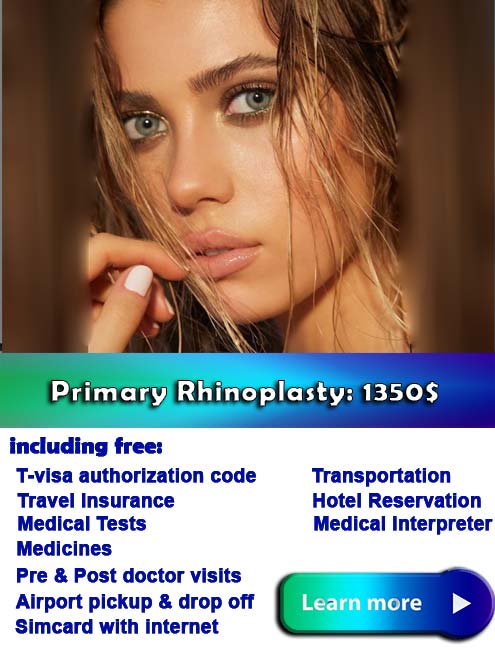
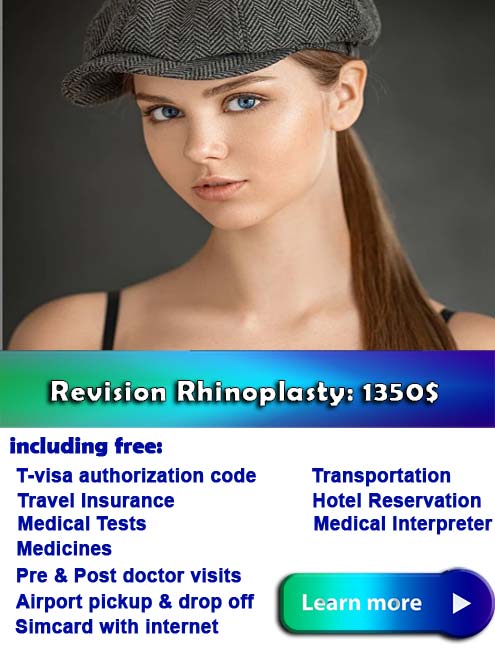
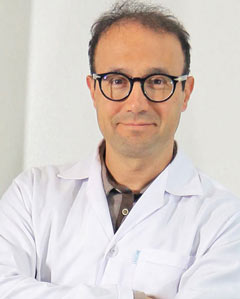
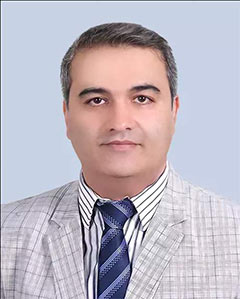
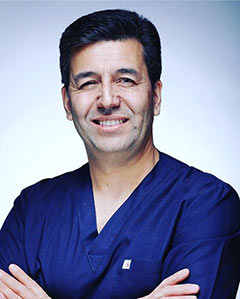
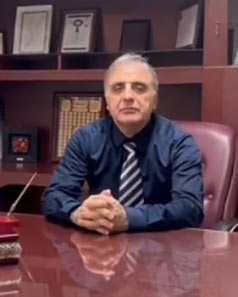
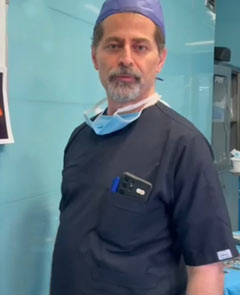
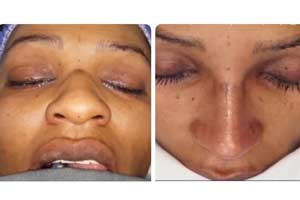
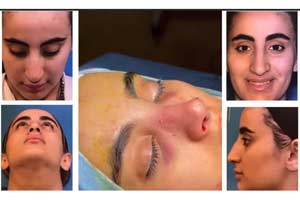
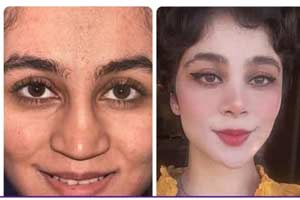
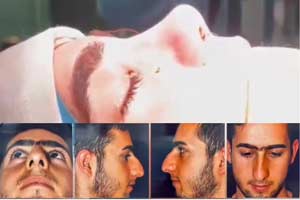
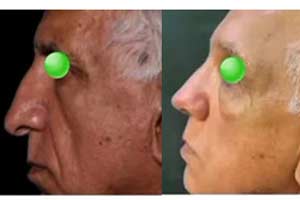
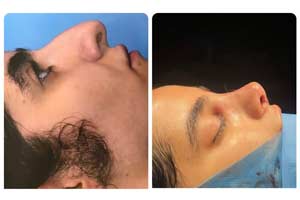
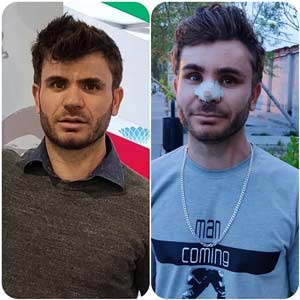



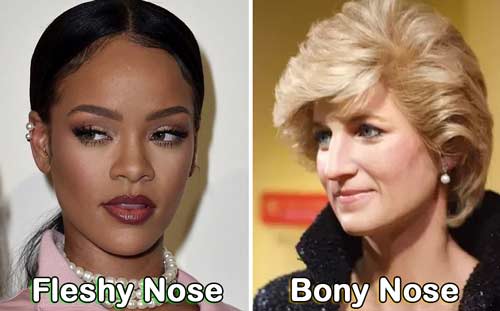
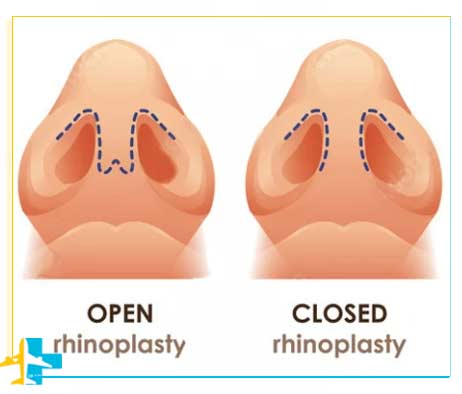
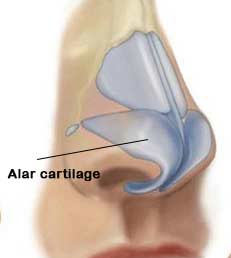
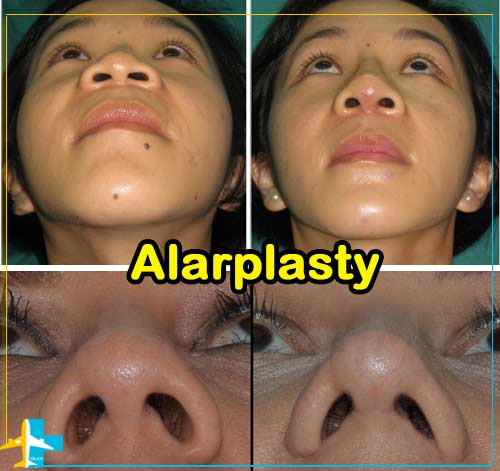
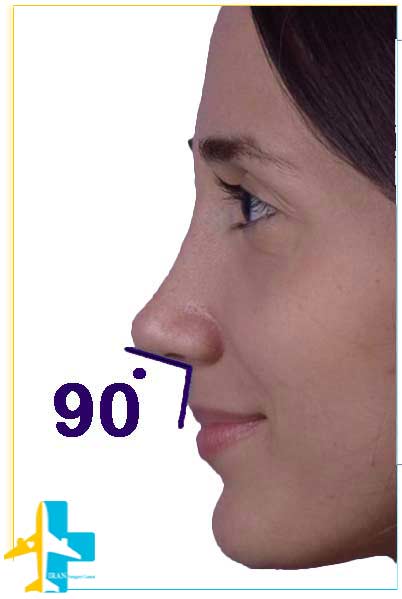
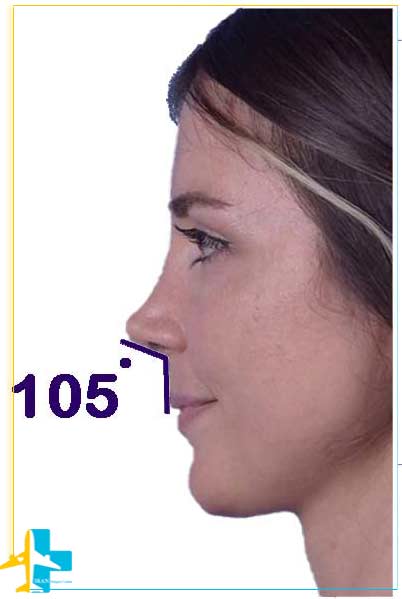

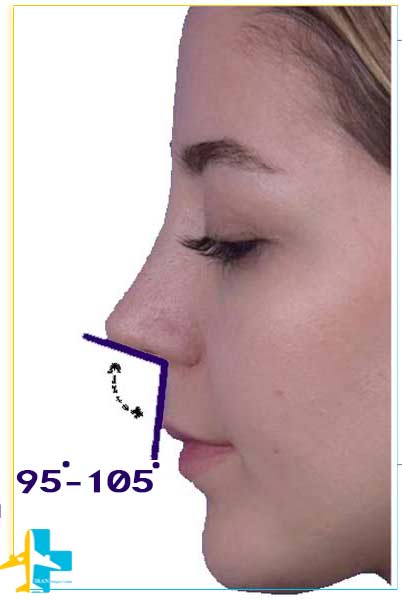
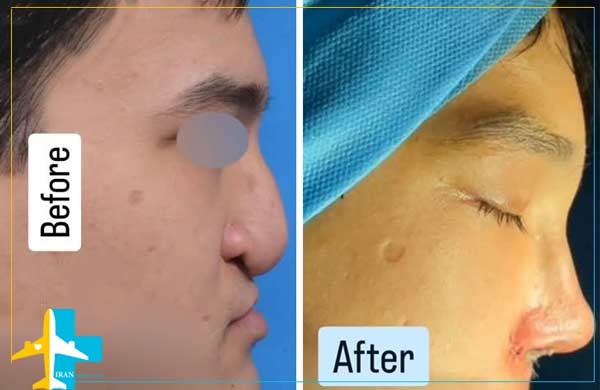
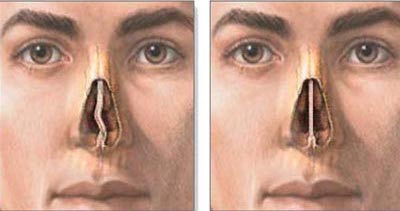
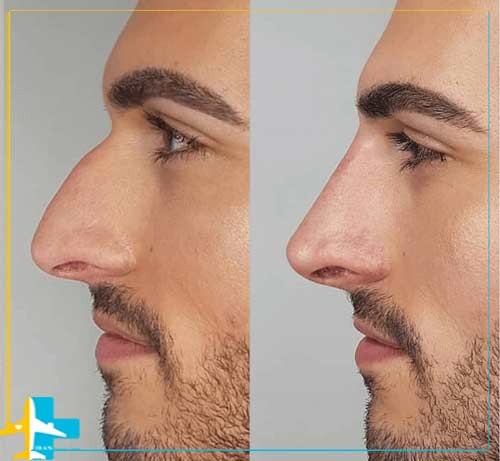
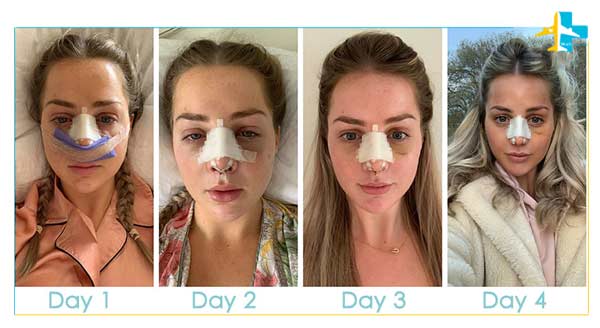
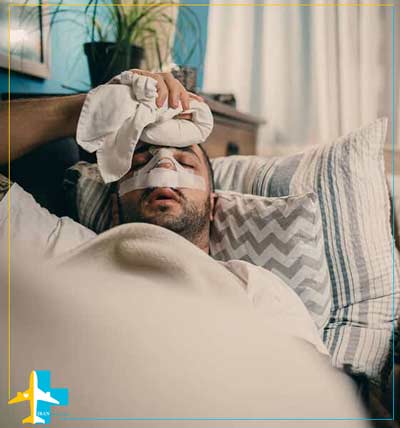

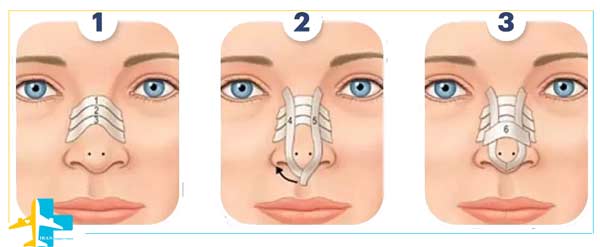
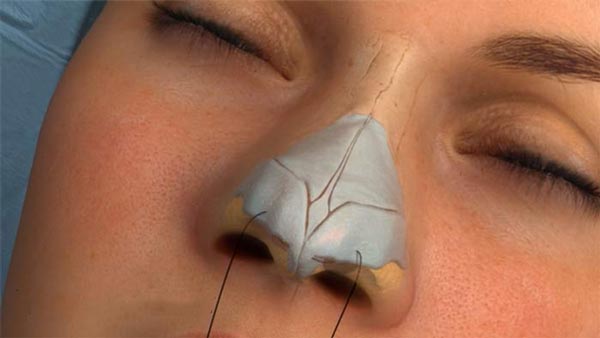
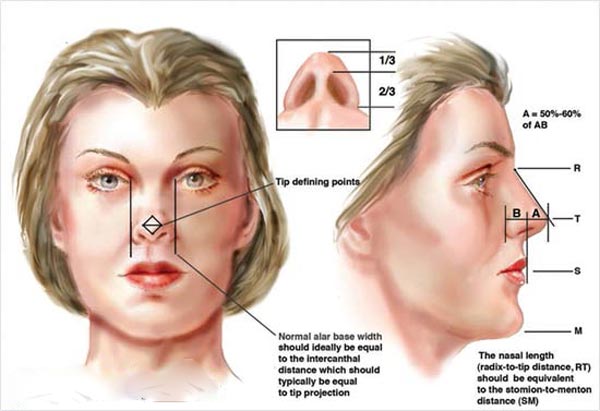
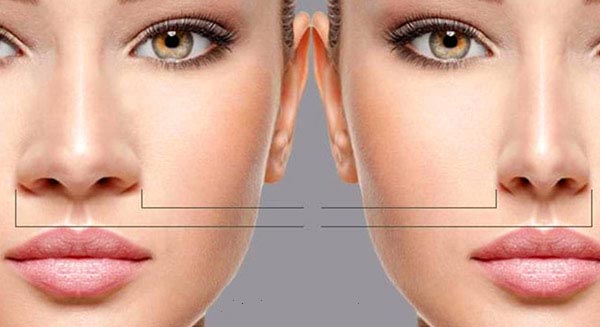
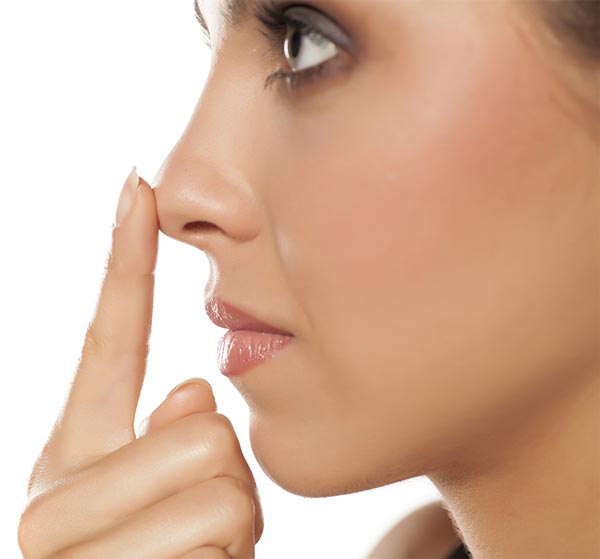


How long after surgery we can use glasses?
After nose surgery, it is better to avoid wearing glasses for three months. During this time, you can use the lens.
At the suggestion of one of your former customers, I want to do nose job and hair transplant in your company.
Can both surgeries be done in one step?
Thank you for your choice.
Yes, nose surgery and hair transplantation can be done in one trip to Iran, but not in one day.
First, your rhinoplasty should be done, and after the recovery period of about 7 to 10 days, you can proceed with hair transplant.
The reason for performing a nose job in the first stage is that the blood pressure of the body decreases during the nose job, and this factor causes the fall of implanted and new hair.
For detailed planning of your trip to Iran, please contact our WhatsApp number
+989057153670
I have done a nose job once and I was not satisfied with the result of the surgery.
Now this time, I want to come to Iran and perform nose surgery in your center. How will the recovery period of my second operation be? Can I come alone or is it better to bring someone with me to take care of me during this period?
Hello dear Soma
The reconstructive operation of the nose will be slightly different from the primary nose surgery.
The process of returning to normal breathing may also be longer. Because in the initial surgery, a little manipulation is done on the nose, but in the reconstructive nose surgery, due to the use of cartilage, the healing process will be slower.
But in general, there is no need to worry, we will be by your side at the Iranian surgery center every moment and we will provide you with a nurse during your recovery.
If you feel comfortable, you can come to Iran with one of your friends, but it is not necessary
I had a nose job in Turkey in September 2022, but my nose is crooked and I am not satisfied with the result of the surgery. When can I apply for a repair operation?
Nose reconstruction surgery can be done one year after the initial surgery.
One year is the time required for swelling to disappear and the final shape of the nose and face to appear.
I had a nose job in Turkey in September 2022, but my nose is crooked and I am not satisfied with the result of the surgery. When can I apply for a repair operation?
Hello and thank you for your message
In order to be able to perform a reconstructive operation, you need the swelling of the nose caused by the nose surgery to disappear before, and the body needs time to perform the next surgery and re-anesthesia, which takes at least a year. That is, September 2024 is the right time to perform nose revision surgery.
Hello, I am interested in getting rhinoplasty + cat eye/eyebrow lift. Can I get both done at the same time?
Hello alex and thank you for your message. Yes, nose surgery can be done naturally along with cat eye surgery. I didn’t understand, do you want to do eyebrow lifting at the same time? For a more detailed check, please send a photo of your face to WhatsApp number 0989057153670 so that the plastic surgeon can check it and announce the more accurate result.
I am planning to have a rhinoplasty and ceramic laminate at the same time. Which should I do first?
Hello, dear Rita. Thank you for your message. After rhinoplasty, your face will be swollen. Therefore, it is better to finish the ceramic laminate of your teeth before rhinoplasty.
Hello, I am planning to travel to Iran and have a rhinoplasty in January. Is rhinoplasty inappropriate in winter?
Thank you for your message.
Nose surgery can be done in all seasons. But in the winter season, if the air is dry, you can use incense and air humidifier. If you do not have access to this device, you can simply boil water in the environment to humidify the air.
But in general, most of our customers perform rhinoplasty during the January holidays, and so far no problems have arisen for them.
Is it possible to perform nose surgery with local anesthesia?
Nose job surgery must be done under general anesthesia. Because the patient’s airway is cut off during the Rhinoplasty procedure. After general anesthesia, a safe airway can be created for the patient.